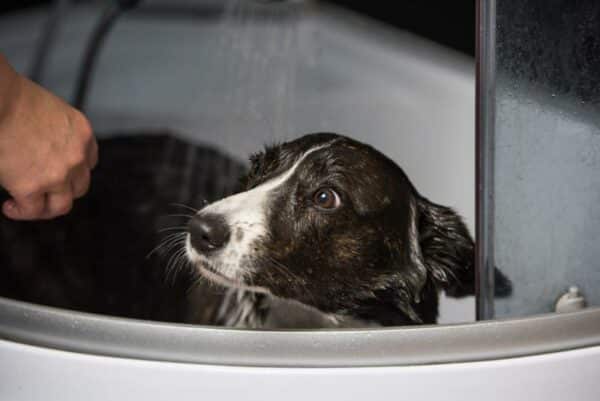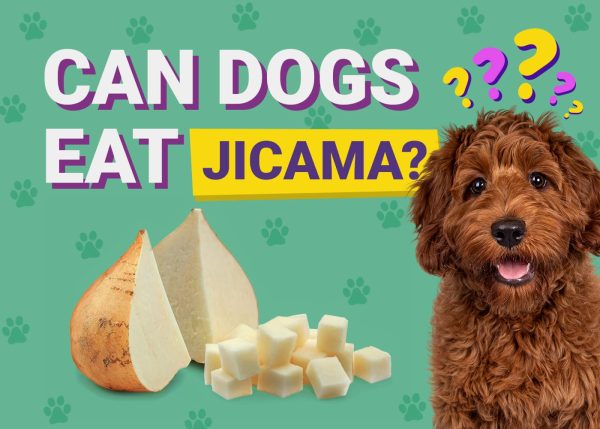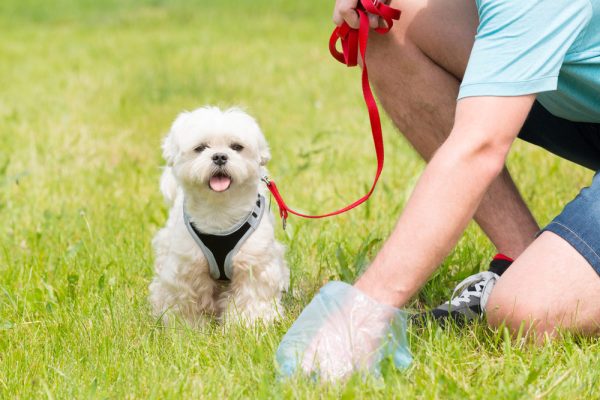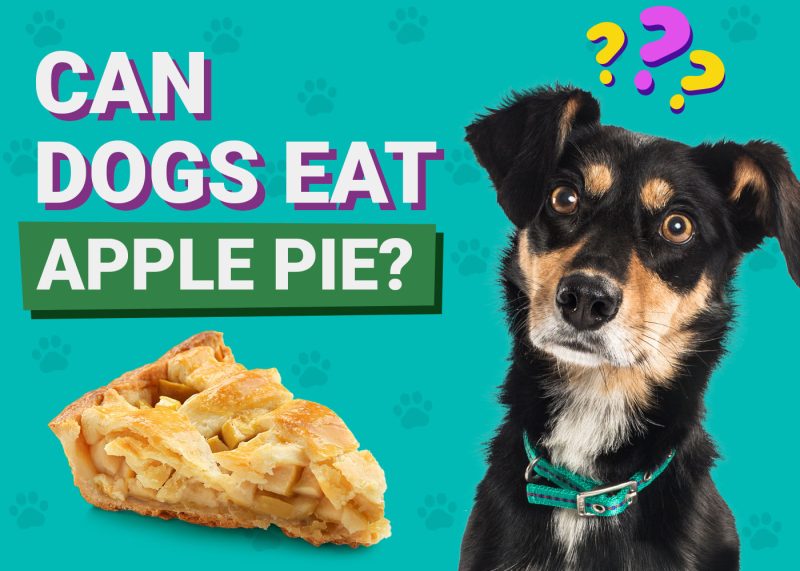When caring for your Pug’s teeth, it’s essential to know the answers to questions about their dental hygiene, such as “How many teeth do Pugs have?” or “Are Pugs more vulnerable to tooth decay than other dogs?” Pugs have 42 adult teeth, but their dental issues are unique due to the size and structure of their mouths. As brachycephalic dogs, Pugs have shortened snouts, which can cause a range of issues related to dental health.
Their teeth are crammed into a smaller space, so overcrowding and teeth aligned sideways are common. Their crowded teeth are vulnerable to trapping food and bacteria due to their mouth-breathing nature. That’s why practicing dental hygiene for your Pug is crucial. From regular brushing to dental supplements, there are many ways to care for a Pug’s teeth.

Before You Start
You should visit a veterinarian if you have any questions or concerns about your Pug’s dental health. They can examine their teeth and determine if they need a professional cleaning or extraction. However, you must also care for your Pug’s teeth at home. Before you start brushing your Pug’s teeth, here are a few useful tips to keep in mind.
1. Consult a Veterinarian
Consulting a veterinarian before caring for your Pug’s teeth is essential. They can provide valuable guidance and support in developing your pet’s dental care routine. They can also diagnose and treat any dental issues that may arise.
When you take your Pug to the vet for a regular check-up, be sure to ask about their dental health. A vet may perform a dental examination and provide recommendations for at-home dental care. That includes brushing techniques and dental chews or treats.
If you notice any signs of dental problems in your Pug, such as bad breath, swollen gums, or loose teeth, it’s important to contact a vet immediately. Dental issues can be painful for your pet and lead to more severe health problems if left untreated.

2. Schedule Professional Dental Care
If brushing your Pug’s teeth is challenging or your vet recommends dental treatment, schedule a professional dental care session. Even with consistent at-home care, your Pug may still develop dental issues that require professional treatment.
During a professional dental cleaning, your vet thoroughly examines your Pug’s teeth, gums, and mouth. They may also take dental X-rays to check for any underlying issues invisible to the naked eye.
Your vet will develop a treatment plan if any dental issues are found. That may include cleaning, extractions, or other procedures. Additionally, professional dental cleanings are typically done under general anesthesia. It allows your vet to thoroughly clean your Pug’s teeth and gums without causing discomfort.
3. Get the Necessary Supplies
Getting the necessary supplies is essential in caring for your Pug’s teeth. Before you begin any at-home dental care routine, you must have all the required supplies. It’s the only way to make the process as easy and effective as possible.
You’ll first need a high-quality toothbrush designed for dogs. Pugs have small mouths, so a toothbrush with a smaller head is ideal. You may also want to consider a finger brush. They are typically more comfortable for your Pug and easier to maneuver.
Next, you’ll need toothpaste designed for dogs. Do not use human toothpaste since it can contain ingredients that are harmful to pets. Dog toothpaste is available in various flavors, so you can choose one your Pug likes.


During the Process
Brushing a Pug’s teeth may seem simple. However, it may take your dog a while to get used to having their teeth brushed.
4. Be Gentle and Patient
When caring for your Pug’s teeth, being gentle and patient is important. They may initially resist having their teeth brushed or examined, but you can help your pet become more comfortable with patience and positive reinforcement.
If your Pug is new to dental care, start by gently touching their lips and gums to get them used to the sensation. Once they are comfortable with this, you can move on to applying toothpaste to their mouth with a finger. Eventually, you can use a toothbrush to clean their teeth, but only clean a few at a time if they seem anxious. It may take several weeks for them to get used to the process.
A soft-bristled toothbrush can make brushing more comfortable for your Pug. Most importantly, don’t rush the process or force your Pug to endure a stressful dental care session. You can take breaks as needed and always end on a positive note.
5. Brush Your Pug’s Teeth
Brushing your Pug’s teeth regularly is an important part of their dental care routine. Here’s a full step-by-step guide on how to brush your Pug’s teeth:
- Gather your supplies. You will need a soft-bristled toothbrush, pet-safe toothpaste, and a towel.
- Allow your Pug to sniff and lick the toothbrush to familiarize them.
- Put a small amount of dog toothpaste on the toothbrush. Let your Pug lick it off the brush to get used to the flavor.
- Gently lift their lip and brush their teeth in a circular motion, focusing on the gum line. Start with a few teeth and gradually work up to the entire mouth.
- Use a light touch and be careful not to brush too hard, as it can cause gum irritation and bleeding.
- Offer a treat and verbal praise to reward your Pug for cooperating during the brushing session.
- Brush your Pug’s teeth at least once daily to prevent dental problems.
- If your Pug resists toothbrushing, consult a veterinarian for advice and guidance.

6. Consider Supplemental Dental Care
Supplements, in addition to regular toothbrushing, can also effectively promote your Pug’s dental health. Some popular dental supplements include probiotics, water additives, powders, and enzymes. Probiotics are beneficial bacteria that may promote healthy digestion and immune function. They can also control harmful bacteria in your Pug’s mouth that can lead to dental problems.
Water additives can reduce plaque and freshen their breath.
Dental powders act in various ways depending on ingredients to reduce plaque and tartar.
On the other hand, enzymatic toothpaste can break down deposits in your Pug’s mouth, reducing the buildup of harmful bacteria and plaque. You can also consider omega-3 fatty acids, which have anti-inflammatory properties. They can reduce inflammation in your Pug’s mouth, which contributes significantly to gum disease.

After Care Tips
Veterinary dental care doesn’t end with regular brushing. The best way to maintain dental hygiene for your Pug is with follow-up precautions around the clock.
7. Encourage Drinking Water Regularly
Encouraging your Pug to drink water regularly is an important aspect of maintaining their dental health. So, make sure that your Pug has access to fresh, clean water at all times. Change the water in their bowl at least once a day so they’re more willing to drink.
Additionally, choose a sturdy, non-toxic bowl that is easy to clean. It’s best to avoid using plastic bowls, which can harbor bacteria and may cause problems in some dogs.

8. Pay Attention to Your Pug’s Diet
Your Pug’s diet can significantly affect their dental health. Feeding your Pug high-quality dry dog food designed for their age and size can keep their teeth clean and healthy. Look for dog food that includes a recommendation to support dental health.
Avoid giving your Pug sugary and starchy foods, which can form plaque and tartar on their teeth. Additionally, consider incorporating dental treats and chews into their diet. This can help scrape away plaque and tartar while giving them the mental stimulation of chewing.
Lastly, consult a veterinarian to determine the best diet for your Pug’s needs. You must also monitor their food intake to ensure that they are maintaining a healthy weight. A healthy diet for your Pug can go a long way toward promoting good dental hygiene and overall health.
If you need to speak with a vet but can't get to one, head over to PangoVet. It's our online service where you can talk to a vet online and get the personalized advice you need for your pet — all at an affordable price!

9. Monitor Your Pug’s Dental Hygiene
Monitoring your Pug’s dental hygiene ensures their teeth and gums stay healthy. Regularly check your Pug’s teeth and gums for signs of problems, such as bad breath, swollen gums, or loose or missing teeth. If you notice any issues, consult a veterinarian right away.

10. Use Tooth-friendly Treats and Toys
Using tooth-friendly toys and treats is another way to promote your Pug’s dental health. Look for dental chews or toys designed to clean your dog’s teeth and massage their gums. They can remove plaque and tartar and keep their teeth and gums healthy.
However, be sure to choose safe and appropriate products for your Pug’s age and chewing habits. Avoid any products that are too hard or may cause choking hazards. The Veterinary Oral Health Council (VOHC) assesses dog and cat dental products for safety and efficacy. Look for the VOHC seal of approval on products such as dental treats, water additives, toothpaste, and chews.
You can also offer fresh, crunchy fruits and vegetables as treats.

Conclusion
Caring for a Pug’s teeth is essential for maintaining their overall health and well-being. As a brachycephalic breed, Pugs require special attention when it comes to dental hygiene. By prioritizing dental care for your Pug, you can prevent dental disease and maintain good oral hygiene.
Related Read:
- Why Is My Dog Missing Teeth? 5 Vet Reviewed Reasons
- Tooth Resorption in Dogs: Causes, Signs & Care (Vet Answer)
Featured Image Credit: Matt Benoit, Shutterstock


















